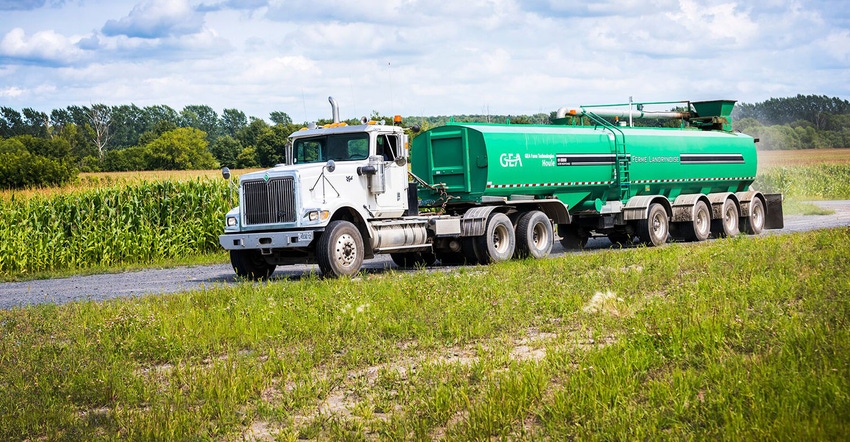
A proposed revision to the Pennsylvania Phosphorus Index would better target practices to reduce phosphorus loss.
Jennifer Weld, project associate in Penn State’s Department of Ecosystem Science and Management, says the proposed revision, Version 3, would create separate dissolved and particulate phosphorus values to better target runoff and soil erosion risks. Dissolved phosphorus comes from surface runoff, while particulate runoff is attached to soil erosion.
"This will potentially tell you if you have a higher vulnerability for particulate P loss or a higher vulnerability for soluble P loss. This is an important step for us to take in terms of starting to target best management practices," Weld says. "So, if a farmer or consultant ran the P index and they have a higher particulate phosphorus value, the intent is to not only have a recommendation for N-based or P-based management, or no manure, but also BMPs that could at least start the discussion of better soil conservation practices, cover cropping or rotations."
Focus on phosphorus
Penn State and the USDA’s Agricultural Research Service developed the phosphorus index as part of changes to the state’s nutrient management law that placed greater emphasis on phosphorus. The tool evaluates fields that are at higher risk of phosphorus loss to water bodies by looking at phosphorus sources — synthetic fertilizer, manure, biosolids — and how they move through the environment.
Too much phosphorus in water can lead to excessive algae growth and bacteria that consume dissolved oxygen, essentially suffocating plants and fish. Erosion and runoff are the primary ways phosphorus from farmland gets into waterways in Pennsylvania, Weld says.
"The intent of the phosphorus index or phosphorus management is to identify these critical areas on the landscape or on the farm. It's not going to be the entire farm most likely," she says, adding that 90% of potential phosphorus loss on farms comes from about 10% of the land. "So, it’s finding that 10% of where those critical sources lie, to ID areas to target either through BMPs or changes in management application."
Changes to current index
Weld says EPA and NRCS have challenged the concept of the phosphorus index since it allows phosphorus to be applied on soils even if it’s not needed to achieve an average crop yield.
But the larger issue, she says, is dealing with local inconsistencies. Weld says that, while water quality is an issue in the Northeast, areas of the Midwest and West are focused more on water quantity, so the values of a phosphorus index would apply differently.
The current Version 2 combines dissolved and particulate phosphorus into one value. Recommendations are then made to address the risk of phosphorus loss, up to and including banning fertilizer or manure applications on certain fields.
Weld says current recommendations are based on crop needs and don’t focus on factors that could prevent phosphorus loss in the first place.
More conservation practices
Weld says the state is involved in a Northeast CIG project looking at land management practices throughout the Northeast.
In a 2016 survey of nutrient management professionals, Weld says there was strong agreement that conservation practices such as no-till, cover crops and vegetative buffers should be encouraged to address particulate phosphorus loss. When it comes to dissolved phosphorus loss, respondents said that fields with insufficient ground cover should be addressed in terms of how nutrient recommendations are made to farmers and not addressed in the phosphorus index. There was also concern about the connection of dissolved phosphorus loss to winter manure application.
"We're trying to prioritize our BMPs but also have an understanding of where they belong within our revised P index framework," Weld says "Is it a site characteristic, is it a management characteristic or is it really a component of what we're trying to do, which is to better target management practices through our nutrient recommendations. And it's in this process where we're engaging stakeholder groups not only regionally, but also looking to engage stakeholder groups on a state level."
About the Author(s)
You May Also Like






